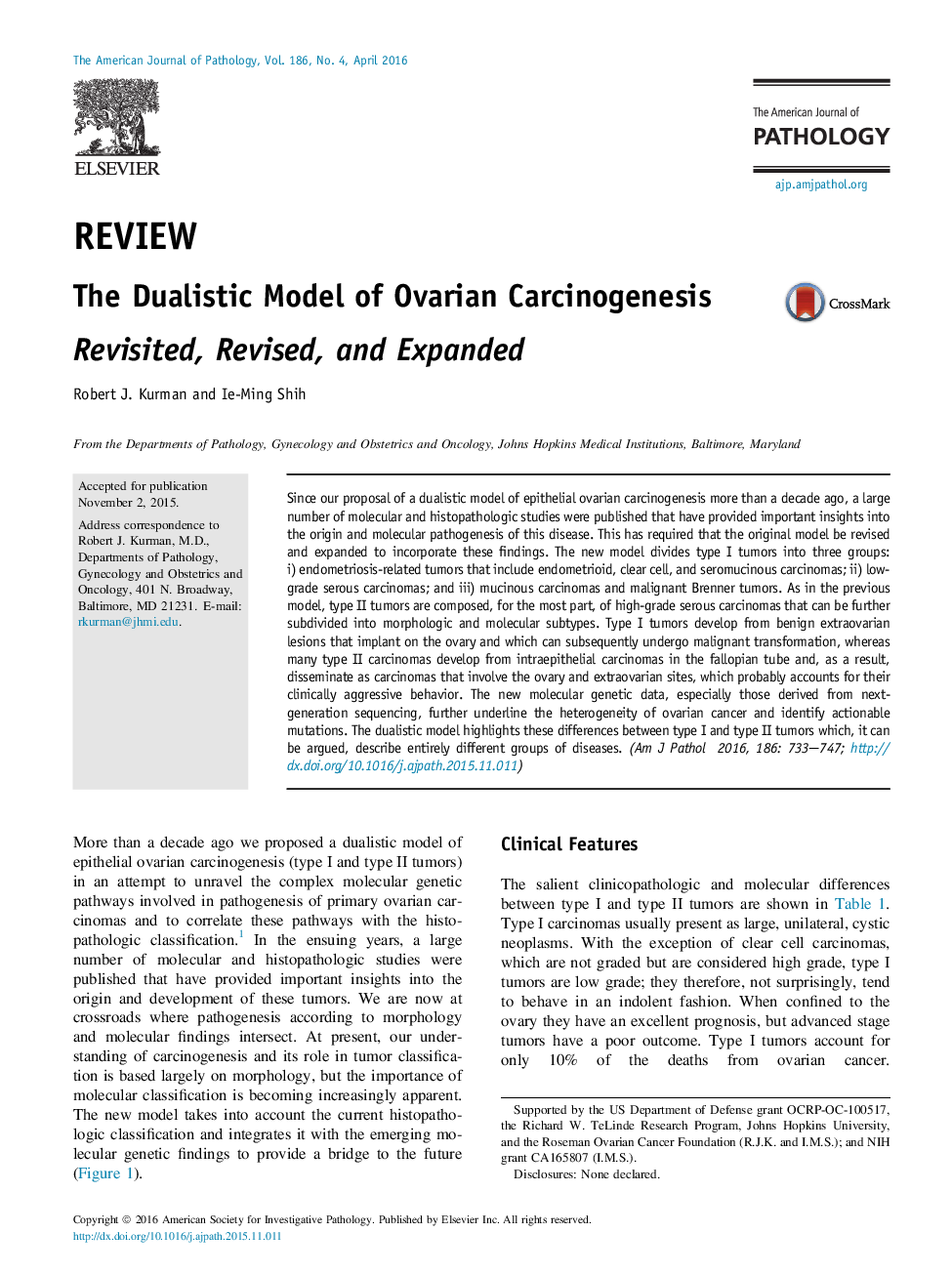| کد مقاله | کد نشریه | سال انتشار | مقاله انگلیسی | نسخه تمام متن |
|---|---|---|---|---|
| 2865728 | 1573369 | 2016 | 15 صفحه PDF | دانلود رایگان |
Since our proposal of a dualistic model of epithelial ovarian carcinogenesis more than a decade ago, a large number of molecular and histopathologic studies were published that have provided important insights into the origin and molecular pathogenesis of this disease. This has required that the original model be revised and expanded to incorporate these findings. The new model divides type I tumors into three groups: i) endometriosis-related tumors that include endometrioid, clear cell, and seromucinous carcinomas; ii) low-grade serous carcinomas; and iii) mucinous carcinomas and malignant Brenner tumors. As in the previous model, type II tumors are composed, for the most part, of high-grade serous carcinomas that can be further subdivided into morphologic and molecular subtypes. Type I tumors develop from benign extraovarian lesions that implant on the ovary and which can subsequently undergo malignant transformation, whereas many type II carcinomas develop from intraepithelial carcinomas in the fallopian tube and, as a result, disseminate as carcinomas that involve the ovary and extraovarian sites, which probably accounts for their clinically aggressive behavior. The new molecular genetic data, especially those derived from next-generation sequencing, further underline the heterogeneity of ovarian cancer and identify actionable mutations. The dualistic model highlights these differences between type I and type II tumors which, it can be argued, describe entirely different groups of diseases.
Journal: The American Journal of Pathology - Volume 186, Issue 4, April 2016, Pages 733–747
